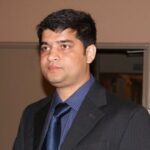
The Applied Physics/Engineering Division has long been the premier gathering place for the global community of device physicists and engineers, material scientists, and surface analysts. The division provides a forum for research in nanotechnology, optoelectronics, magneto-optics, renewable energy generation and storage and thin film electronic devices in general. The research including material synthesis, device engineering, and characterization of thin film surfaces and interfaces is covered as well. Furthermore, the 2D materials such as graphene, and transition metal dichalcogenides and their application in optoelectronic devices, sensing, energy storage, quantum computing, etc. are discussed. In addition, the session will include bio-medical devices and applications related to high frequency communication in consumer electronics, EVs, and aviation. The division broadly includes the following topics:
- Solar cells, batteries, thermoelectric devices and supercapacitors
- Catalysis, fuel cells and water splitting
- Bio-batteries, bio-solar cells and microbial fuel cells
- Nanomaterial synthesis, 2D materials and corresponding devices
- Light emitting diodes and transistors
- Materials for quantum information science
- Biomedical devices and wearables
- Antenna, amplifiers, passive devices, etc. for high speed communication

Invited Speaker
Title: Advanced Semiconductor Technologies: Current Status and Future Outlook
The first part of the talk will discuss non-conventional thin film devices for flexible electronics applications. The presentation highlight includes high performance flexible transistors, direct write single and multi-layers metal dichalcogenides (TMDs) devices, ionic liquid gated single layer graphene devices and so on.
The second half of the talk will present the current state-of-art semiconductor technologies, including Fin-FET, Gate-All-Around (GAA) and Multi-bridge Channel (MBC) field effect transistors and more. The top foundries around the globe are competing to develop sub 20A technologies for high performance computing and artificial intelligence (AI) applications. I will share the current-status and future outlooks for these technologies.
Please look below for detailed schedule.
|
Date/Time: |
Abstract Number: ANPA2024-N0008 Presenting Author: Bed Prasad Pandey Presenter's Affiliation: CDP,TU Title: High Speed Application of Source Pocket Hetero-Dielectric Double Gate TFETs Location: In-Person Presentation, CDP Show/Hide Abstract High Speed Application of Source Pocket Hetero-Dielectric Double Gate TFETs
Bed Prasad Pandey1, Santosh Kumar Pandit1, Sanju Shrestha1, Om Prakash Niraula1
and Kavindra Kumar Kavi2
1Central Department of Physics, Tribhuvan University, Kirtipur, Kathmandu, Nepal,
2Electronics and Communication Engineering Department, Motilal Nehru National Institute of Technology Allahabad, Prayagraj 211004, India
Email: bedprasadpandey80@gmail.com
Abstract:
Tunnel field effect transistor (TFET) is studied for its ability to have low power consumption due to low sub-threshold swing (SS), in addition it has low trans-conductance (g_m ) and high on-off ratio. Hence, silicon-based double-gate TFET is optimized with source pocket (SP) along with a combination of high-k materials forming hetero-dielectric at the gate. The various physical parameters mentioned above of such SP heterodielctric TFET (SP HD TFET) is studied using Silvaco, simulations are performed in Technology Computer- Aided Design (TCAD). The nature and the calculated values of the drain current, electric field, band energy, subthreshold swing (SS), Ion/Ioff ratio shows that it’s appropriate application as low power as well as a high-speed performance.
|
||||||
|
Date/Time: |
Abstract Number: ANPA2024-N0009 Presenting Author: Santosh Kumar Pandit Presenter's Affiliation: Ph.D Scholar,CDP, TU Title: Simulation, modeling and optimization of Source Pocket- Based Hetero-Dielectric Double- Gate TFETs for enhance performance. Location: In-Person Presentation, CDP Show/Hide Abstract A physics-based 2-D analytical model for electrical characteristics such as electric field, surface potential, and drain current of source pocket hetero-dielectric double-gate tunnel FET (SP-HD-DG-TFET) is proposed to simultaneously increase the drain current and immune the sub threshold swing (SS). The presented structure of the device consists of a source pocket of highly n+-doped Silicon with a horizontally stacked gate-oxide structure of HfO2-SiO2. The influence of incorporating hetero dielectric and work function engineering shows a significant enhancement in ON-state current ION (4.35× 10–5 A/μm) and lower leakage current IOFF (1.47× 1012 A/μm), ION/IOFF (1.36× 1012), smaller sub threshold swing SS (9.7 mV/decade). We examined an optimized hetero gate dielectric to reduce am bipolar current conduction, leakage current, and boost ON-current for this purpose (ION). The technology computer-aided design (TCAD) simulations were carried out.
|
||||||
|
Date/Time: |
Abstract Number: ANPA2024-N00010 Presenting Author: Saddam Husain Dhobi Presenter's Affiliation: Central Department of Physics, Tribhuvan University, Kirtipur, Kathmandu, Nepal Title: Effect of Thermal Quantum Species Screening on Fuel Cell Performance Location: In-Person Presentation, CDP Show/Hide Abstract The objective of this research work is to understand how the voltage and power of proton exchange membrane fuel cells (PEMFCs) are affected by how thermal quantum species at 315K play a role on performance of PEMFCs, especially for Pt/C electrons. For this author use an online MATLAB student package and compared two types of characteristics, I-V and I-P with adjusting the activation potentials of Pt/C. The results show as current increased, the voltage dropped steadily from 0.45V to 0.88V in the I-V characterization. However, in the I-P characteristics, power initially increased from 0.95 W to 1.27 W, but then decreased sharply at an activation potential of 40mV. Similarly, at 55 mV activation potential, the voltage dropped from 0.35V to 0.78V as current increased, while power initially rose from 1.30 W to 1.55 W before decreasing. This decline in power was due to screening effects around the electrodes caused by the formation of quantum species in the system. this like oxides formed around electrode of battery electrode and reduce the performance of batteries.
|
||||||
|
Date/Time: |
Abstract Number: ANPA2024-N00011 Presenting Author: LEO DYAJI Presenter's Affiliation: UNIVERSITI MALAYA, MALAYSIA Title: Innovations in Green Chemistry for Minimizing Environmental Impact and Promoting Sustainable Product Design Location: In-Person Presentation, CDP Show/Hide Abstract The increasing awareness of environmental sustainability and the urgency to mitigate the adverse effects of industrial processes have led to significant advancements in green chemistry. This article explores recent innovations in green chemistry aimed at minimizing environmental impact and promoting sustainable product design. It provides a comprehensive overview of novel methodologies and materials that reduce the use of hazardous substances, lower energy consumption, and enhance the recyclability of products. Key areas of focus include the development of eco-friendly solvents, catalysts, and renewable feedstocks, as well as the integration of life cycle assessment (LCA) in the design of sustainable products. Case studies demonstrating successful applications of green chemistry principles in various industries will be presented, highlighting the economic and environmental benefits achieved. This research underscores the potential of green chemistry to drive sustainable industrial practices and contribute to global efforts in achieving environmental sustainability. The findings will advocate for broader adoption of green chemistry techniques to foster innovation and resilience in the face of environmental challenges.
|
||||||
|
Date/Time: |
Abstract Number: ANPA2024-N00014 Presenting Author: BINAYA CHANDRA POKHREL Presenter's Affiliation: PMC, TU, Nepal Title: Deciphering Atomic Polarization Effects on Energy Dynamics and Output Voltage in Proton Exchange Membrane Fuel Cells Location: Poster Presentation Show/Hide Abstract The impact of various parameters such as atomic polarizability, infrared frequency, and polarizability distance on Proton Exchange Membrane Fuel Cells (PEMFCs) performance during the interaction of hydrogen and platinum is explored with first order perturbation theory and theories of electrochemistry in this article. This comprehensive analysis reveals significant insights into energy change, actual potential variation, and current-voltage relationships for the cell. It is found that energy shift in the PEMFC system increases with infrared frequency and atomic polarizability, indicating a higher tendency for ionization in particular thermal energy (exothermic energy; virtual photon) and polarizability conditions. Moreover, we find there is a crucial role of atomic polarizability to determine actual potential generated within the anode of PEMFC. The analysis suggests higher polarizability values generate low or zero potential. This study depicts the inverse correlation between output voltage and current density indicating the limitations of PEMFCs under higher load conditions, highlighting the necessity for optimization in cell designing and other operational parameters. In conclusion, this study indicates the loop for the optimization of PEMFC performance, offering combo, quantum and electrochemical, basis for the fuel cell technology in practical applications.
|
||||||
|
Date/Time: |
Abstract Number: ANPA2024-N000120 Presenting Author: Pushpa Raj Pudasaini (Invited) Presenter's Affiliation: Samsung Austin Semiconductor Title: Advanced Semiconductor Technologies: Current Status and Future Outlook. Location: Virtual Presentation Show/Hide Abstract The first part of the talk will discuss non-conventional thin film devices for flexible electronics applications. The presentation highlight includes high performance flexible transistors, direct write single and multi-layers metal dichalcogenides (TMDs) devices, ionic liquid gated single layer graphene devices and so on.
The second half of the talk will present the current state-of-art semiconductor technologies, including Fin-FET, Gate-All-Around (GAA) and Multi-bridge Channel (MBC) field effect transistors and more. The top foundries around the globe are competing to develop sub 20A technologies for high performance computing and artificial intelligence (AI) applications. I will share the current-status and future outlooks for these technologies.
|
||||||
|
Date/Time: |
Abstract Number: ANPA2024-N000121 Presenting Author: Sunil Koju Presenter's Affiliation: Department of Physics, Amrit Science Campus Title: Preparation of Activated Carbon based on Buddleja Paniculata as a Low-Cost Electrode Material for Supercapacitor Application Location: Virtual Presentation Show/Hide Abstract In this study, the wood of Buddleja Paniculata was used to prepare activated carbon using chemical activation by ZnCl2 at 700 °C. The physical properties of the activated carbon were analyzed by using X-ray Diffraction (XRD), Raman spectroscopy, Fourier Transform Infrared Spectroscopy (FTIR), N2 adsorption-desorption isotherms, Scanning Electron Microscopy (SEM), and Energy Dispersive X-ray Spectroscopy (EDS). These analyses revealed a high carbon concentration (96.7 %) and a dominant amorphous carbon. The calculated Brunaeur-Emmet-Teller (BET) surface area of activated carbon was 1326 m2g-1 with a higher number of microporous structures. The electrochemical properties of the prepared supercapacitor electrodes using activated carbon were analyzed by cyclic voltammetry (CV) and galvanostatic charge-discharge (GCD) tests in a three-electrode system. They exhibited excellent cyclability and a specific capacitance of 117.58 F g-1 at 1 A g-1 was obtained. The above investigation indicates that the activated carbon of Buddleja Paniculata could be a promising low-cost electrode material for supercapacitors.
|
||||||
|
Date/Time: |
Abstract Number: ANPA2024-N000122 Presenting Author: Tej Nath Lamichhane Presenter's Affiliation: University of Central Oklahoma Title: A material processing prospective on exchange-spring permanent magnets Location: Virtual Presentation Show/Hide Abstract Exchange coupling between hard magnetic layers separated by a soft magnetic layer to enhance the magnetic coercivity is an overarching principle of exchange-spring permanent magnet which has potential to design critical rare-earth free permanent magnets. Although it can be easily demonstrated in thin film technology, it is very challenging in bulk polycrystalline permanent magnets to achieve high energy density. This presentation will investigate the status of thin films based and polycrystalline based exchange-spring permanent magnet systems, compare most successful materials systems and their processing technologies. Finally, an outlook will be presented for critical rare earth free (La & Ce-based) polycrystalline exchange-spring permanent magnet systems.
|
||||||
|
Date/Time: |
Abstract Number: ANPA2024-N000123 Presenting Author: BASANTA KUMAR RAJBANSHI Presenter's Affiliation: SHRI RAMSWAROOP MEMORIAL UNIVERSITY, LUCKNOW, INDIA Title: Estimation of Global Solar Radiation at Eastern Upland, Taplejung, Nepal using RadEst 3.0 software Location: Virtual Presentation Show/Hide Abstract It is more than 300 words
|
||||||
